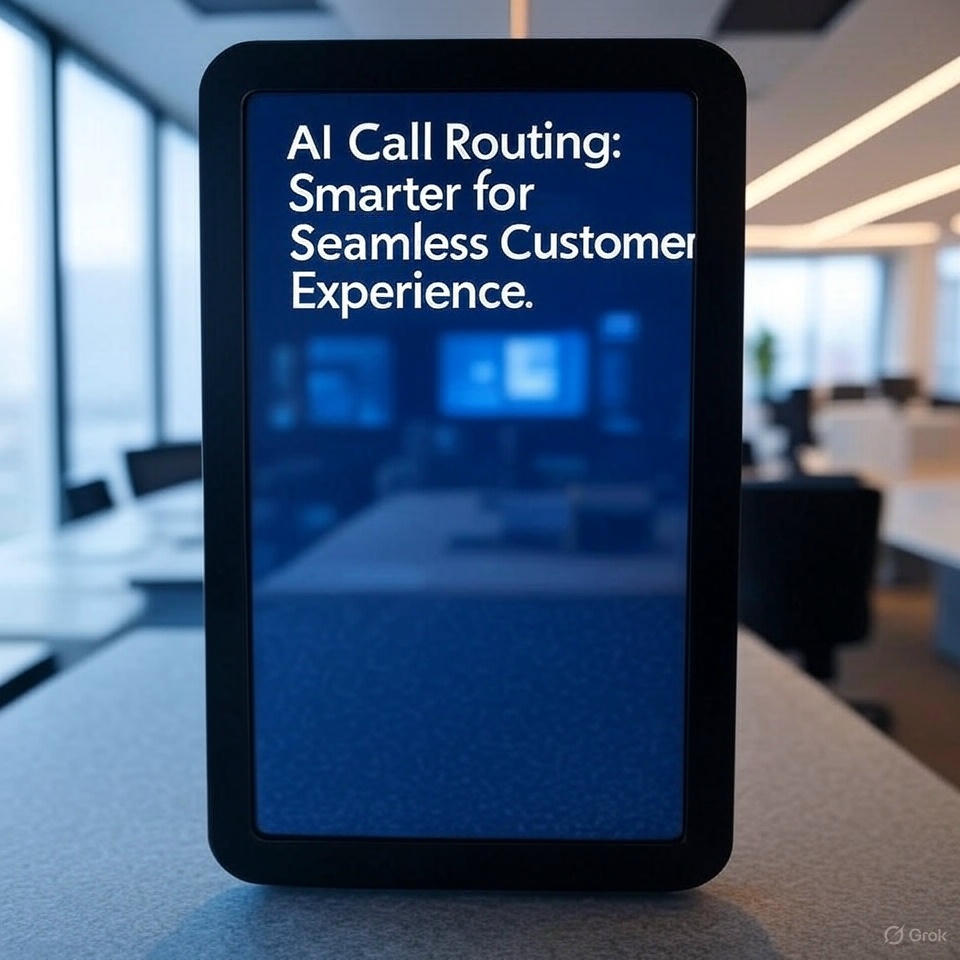AI Call Routing Made Smarter for Seamless Customer Experience
Emotion AI Emotion AI, also known as affective computing, is a rapidly emerging branch of artificial intelligence that focuses on the recognition, interpretation, simulation, and response to human emotions. By using machine learning, computer vision, natural language processing, and voice analysis, Emotion AI enables computers to detect and respond to emotional cues in ways that were previously thought to be the exclusive domain of humans. The development of Emotion AI is reshaping how machines interact with people, creating more personalized, intuitive, and emotionally aware systems. This technology is being integrated into everything from customer service bots and marketing analytics tools to healthcare diagnostics and automotive systems. It offers businesses and developers the ability to improve user experiences, increase engagement, and make data-driven decisions based on emotional insights. At the core of Emotion AI is the capability to analyze facial expressions, voice tone, gestures, and even physiological signals like heart rate or skin temperature. These inputs are processed by algorithms trained on vast datasets of human behavior to infer emotional states such as happiness, anger, sadness, surprise, and more. This allows machines to understand not just what users are saying, but how they feel when they say it. One of the most common applications of Emotion AI is in customer experience management. Businesses use it to evaluate customer reactions during service calls or product interactions, providing insights that can lead to improved satisfaction and loyalty. For example, call center AI can detect frustration or satisfaction in a caller’s voice and route the call accordingly to a human agent or escalate the support process automatically. In marketing, Emotion AI helps companies measure emotional responses to advertisements, branding, and user interfaces. By tracking eye movement, facial expressions, and emotional arousal, marketers can assess how audiences truly feel about their content and make adjustments to optimize engagement. This leads to campaigns that are not only more effective but also more empathetic to the target audience. Healthcare is another promising field for Emotion AI. By monitoring patients’ emotional well-being through speech and facial recognition tools, doctors and therapists can detect early signs of mental health issues such as depression, anxiety, or stress. These tools can serve as supportive diagnostic aids, especially in telehealth settings where in-person emotional cues are limited. In education, Emotion AI is being used to create adaptive learning environments. By sensing when students are confused, bored, or engaged, educational software can adjust the pace and delivery of content accordingly. This creates a more personalized learning experience that can significantly enhance comprehension and retention. Automotive companies are integrating Emotion AI into in-car systems to improve road safety. By analyzing a driver’s facial expressions and eye movement, the system can detect signs of drowsiness, distraction, or emotional distress and trigger warnings or adjust driving assistance systems to reduce accident risks. While Emotion AI presents significant opportunities, it also raises ethical and privacy concerns. The collection and analysis of emotional data touch upon deeply personal aspects of individual behavior. There is an ongoing debate about consent, data ownership, and the potential for misuse of emotional insights in manipulative advertising or surveillance systems. Ensuring transparency and ethical use of Emotion AI is crucial as its adoption becomes more widespread. Clear guidelines and regulations are needed to protect users from potential harm while promoting innovation. Users should have control over when and how their emotional data is collected and used, and organizations must prioritize secure data handling practices. The development of Emotion AI involves interdisciplinary collaboration between psychologists, data scientists, computer engineers, and ethicists. Understanding the complex and culturally nuanced nature of emotions is essential for building systems that are both accurate and respectful of diversity. Another technical challenge is the variability in how individuals express emotions. What may appear as anger in one culture or individual may signify excitement in another. Emotion AI must be trained on diverse datasets that represent different genders, ages, ethnicities, and cultural contexts to ensure fairness and accuracy in emotional interpretation. Despite its challenges, Emotion AI is steadily evolving and showing immense potential. Companies like Affectiva, Realeyes, and Microsoft are pioneering the space with advanced emotion recognition technologies, while academic institutions continue to research and expand the possibilities of affective computing. In the future, Emotion AI may become an integral part of our digital lives. From emotionally intelligent virtual assistants and immersive gaming experiences to empathetic robots and smarter healthcare systems, this technology will continue to bridge the gap between human emotions and machine intelligence. Moreover, as society grows more digital and remote interactions become the norm, the ability of machines to understand and respond to human emotions will become increasingly valuable. Emotion AI will not replace human empathy, but rather augment it by providing deeper insights and enabling more meaningful connections through technology. In conclusion, Emotion AI represents a transformative shift in the field of artificial intelligence. It opens new frontiers for human-computer interaction, enabling machines to sense and respond to our feelings with a level of nuance never before possible. As we move forward, the key to successful integration of Emotion AI will lie in balancing technological advancement with ethical responsibility, ensuring that it se









